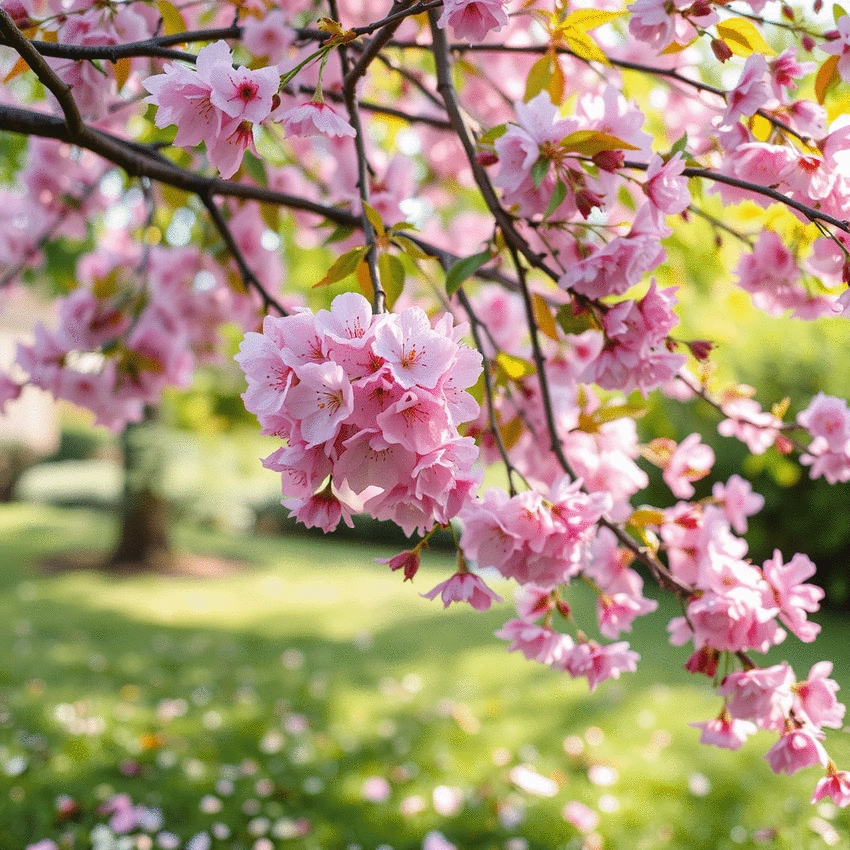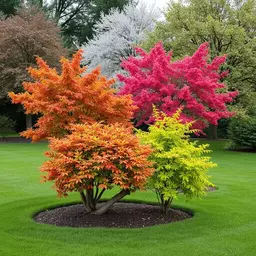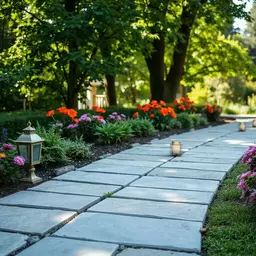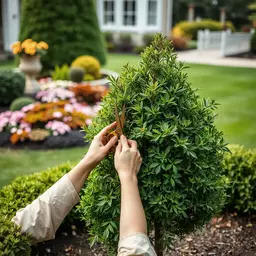Year-Round Trees for Your Landscape
By Celia Fairchild / Nov 02
Are you ready to transform your garden into a blooming oasis? Caring for ornamental cherry blossom trees goes beyond aesthetics; it’s about nurturing a connection with nature that enriches our lives and communities.
Explore the essential care practices that ensure your cherry blossom trees remain healthy and vibrant. For a broader understanding of tree maintenance, you might find our essential tips for tree care helpful.
Deep watering weekly helps promote strong root growth. It's crucial to avoid overwatering to prevent root rot.
Ensure at least 6 hours of direct sunlight each day to encourage vibrant blooms and strong growth.
Well-drained, loamy soil rich in organic matter is ideal. Incorporate compost for better nutrition.
Maintain a pH between 6.0 and 7.0. Regular testing and appropriate amendments ensure optimal health.
Ornamental cherry blossom trees are not just beautiful additions to our landscapes; they are also significant symbols of renewal and beauty. At Ornamental Yard, I believe that understanding the importance of caring for these trees is the first step in truly appreciating their beauty. By providing proper care, we ensure that these stunning trees continue to thrive and grace our gardens with their breathtaking blooms each spring!
Caring for cherry blossom trees is essential for several reasons. First, these trees can contribute to the overall aesthetics of your garden, creating a picturesque scene during blooming season. Additionally, healthy cherry trees can enhance biodiversity, attracting pollinators such as bees and butterflies, which are vital for a balanced ecosystem.
Moreover, proper care can prevent potential diseases and pests from taking hold, ensuring longevity and vibrancy. By investing time and effort into their care, we cultivate not just trees, but a connection to nature that enriches our lives and that of our community. Have you ever thought about how these blossoms can create a sanctuary in your outdoor space?
Now, let’s dive into the essential aspects of caring for ornamental cherry blossom trees! Throughout this article, I'll cover several key areas to help you maintain these beautiful trees:
By following these guidelines, you can create a thriving environment for your cherry blossom trees. As we explore each topic, I hope you’ll feel empowered to turn your garden into a stunning landscape that reflects your style and love for nature! For ideas on how to incorporate them into smaller spaces, check out our guide on decorative trees for small gardens.
Understanding the basic care practices is crucial to keeping your cherry blossom trees healthy and vibrant. Let’s examine some fundamental practices that every homeowner should know!
Watering is one of the most critical aspects of cherry blossom care. These trees typically require deep watering every week, especially during dry spells. Here are some tips for effective watering:
By focusing on these techniques, you can ensure that your cherry blossoms stay hydrated and healthy throughout their growth cycle.
Cherry blossom trees flourish with plenty of sunlight. Ideally, they should receive at least 6 hours of direct sunlight each day. This exposure is essential for:
When planting, be sure to choose a sunny spot to allow your cherry tree to reach its full potential. Have you considered how sunlight can transform your outdoor space into a blooming oasis?
The soil in which your cherry blossom tree is planted plays a significant role in its health. They thrive in well-drained, loamy soil rich in organic matter. Here are a few essential soil tips:
With the right soil conditions, your cherry blossom will flourish and bring joy to your garden with its stunning blooms!
Soil pH is a key factor in ensuring your cherry blossom trees receive the nutrients they need. Ideally, they prefer a slightly acidic to neutral pH (between 6.0 and 7.0). To maintain optimal health, consider the following:
By monitoring soil pH and nutrient levels, you can create a thriving environment that supports your cherry blossom trees’ health and beauty. For more insights on selecting the right trees for your landscape, explore our article on choosing ornamental trees for landscapes.
As you embark on the journey of caring for your ornamental cherry blossom trees, consider this:
What has been your favorite moment watching these trees bloom? Perhaps it's the first sign of flowers in spring or the way they transform your garden into a vibrant haven. We’d love to hear your stories!
Here are some common questions about caring for ornamental cherry blossom trees, providing quick answers to key concerns discussed in this article.
When it comes to caring for your ornamental cherry blossom trees, visuals can play an essential role in enhancing understanding. By incorporating infographics or diagrams, readers can easily visualize the pruning techniques or the signs of diseases to watch for. These engaging visuals can make the information more accessible, helping both novice and experienced gardeners to grasp the essential care practices more effectively.
Imagine looking at a diagram that illustrates the proper angles for cutting branches or an infographic showing common diseases and their treatments. This can bridge the gap between theory and practice, empowering you to take action confidently in your own garden!
It’s crucial to interact with cherry blossom trees carefully, especially if they’re part of a public landscape. Insights from arborists can guide us in maintaining a healthy environment for these beautiful trees. Many professionals emphasize the significance of proper tree care while also respecting the surrounding ecosystem.
For instance, it's vital to avoid damaging the roots when planting or maintaining nearby plants. Additionally, protecting the trees from harsh environmental conditions can improve their resilience. Here's a quick list of expert recommendations for caring for public cherry blossom trees:
As we wrap up our journey through cherry blossom tree care, let’s recap the essential strategies that can help your trees thrive. Remember, proper watering, sunlight exposure, and soil health are the foundational elements for strong, beautiful blossoms. Furthermore, regular pruning and disease management ensure your trees remain healthy throughout the seasons.
Don’t forget to adapt your care practices to the specific needs of your tree, depending on its age and the local climate. Each tree is unique, just like your garden vision, so feel free to experiment and learn what works best for you! For additional inspiration, consider how elegant landscaping with decorative trees can transform any outdoor space.
Now is the perfect time to put these tips into action! At Ornamental Yard, we believe that every homeowner can create their own garden oasis. I encourage you to take these insights and start caring for your cherry blossom trees today! If you have any experiences to share or questions about your trees, please leave a comment below. Let’s cultivate a community where we can learn from each other and inspire one another on this beautiful gardening journey! You might also find valuable tips for maintaining the beauty of your garden by enhancing your outdoors with shrubs.
Here is a quick recap of the important points discussed in the article:

 Year-Round Trees for Your Landscape
Have you ever considered how the right trees can transform your garden into a year-round masterpiece
Year-Round Trees for Your Landscape
Have you ever considered how the right trees can transform your garden into a year-round masterpiece
 Creative Walkway Design Ideas
What if your walkway could do more than just lead the way? With the right design, it can enhance you
Creative Walkway Design Ideas
What if your walkway could do more than just lead the way? With the right design, it can enhance you
 Pruning Tips for Ornamental Shrubs
In the world of gardening, pruning isn't just a routine task; it’s an art that can greatly influen
Pruning Tips for Ornamental Shrubs
In the world of gardening, pruning isn't just a routine task; it’s an art that can greatly influen